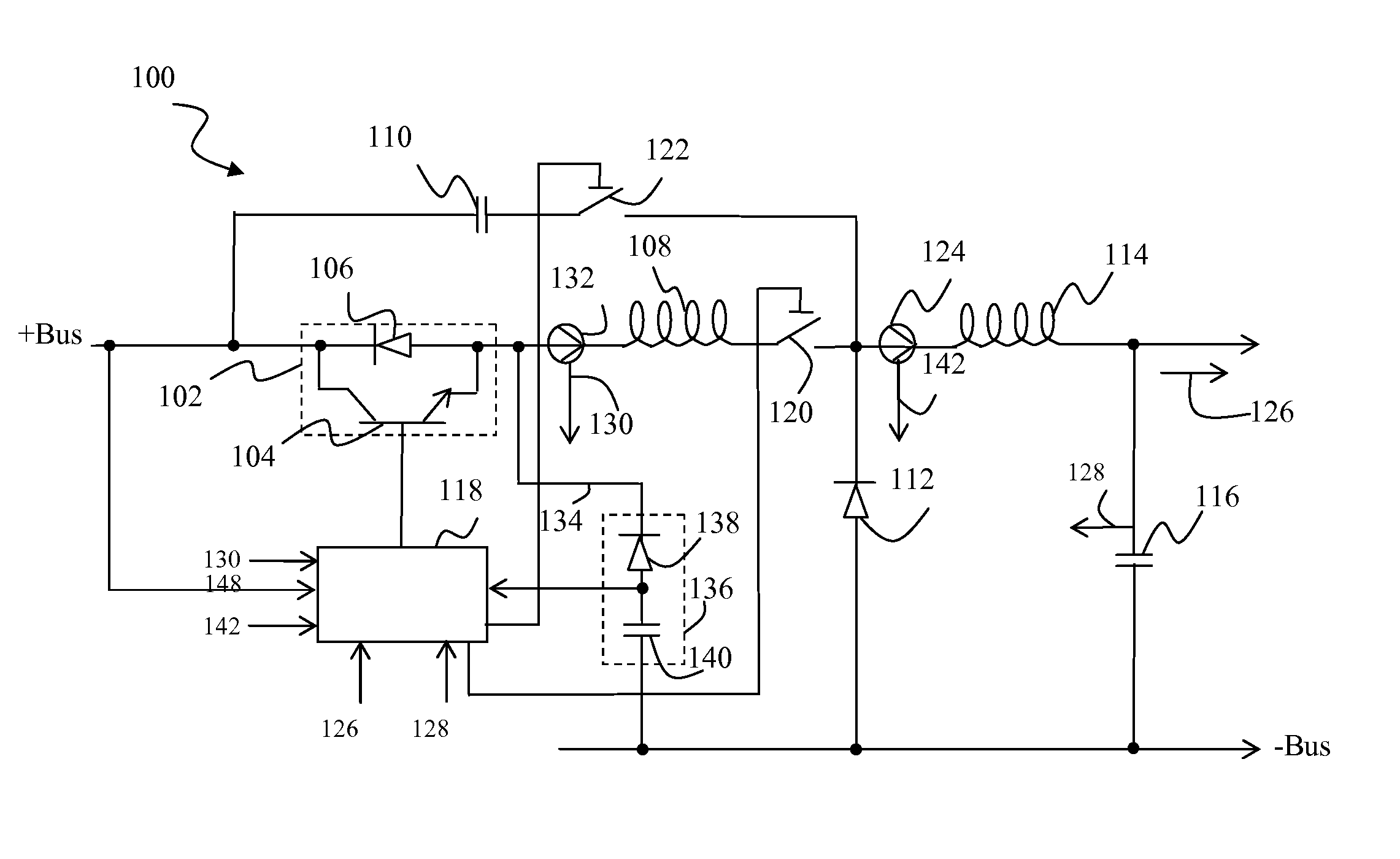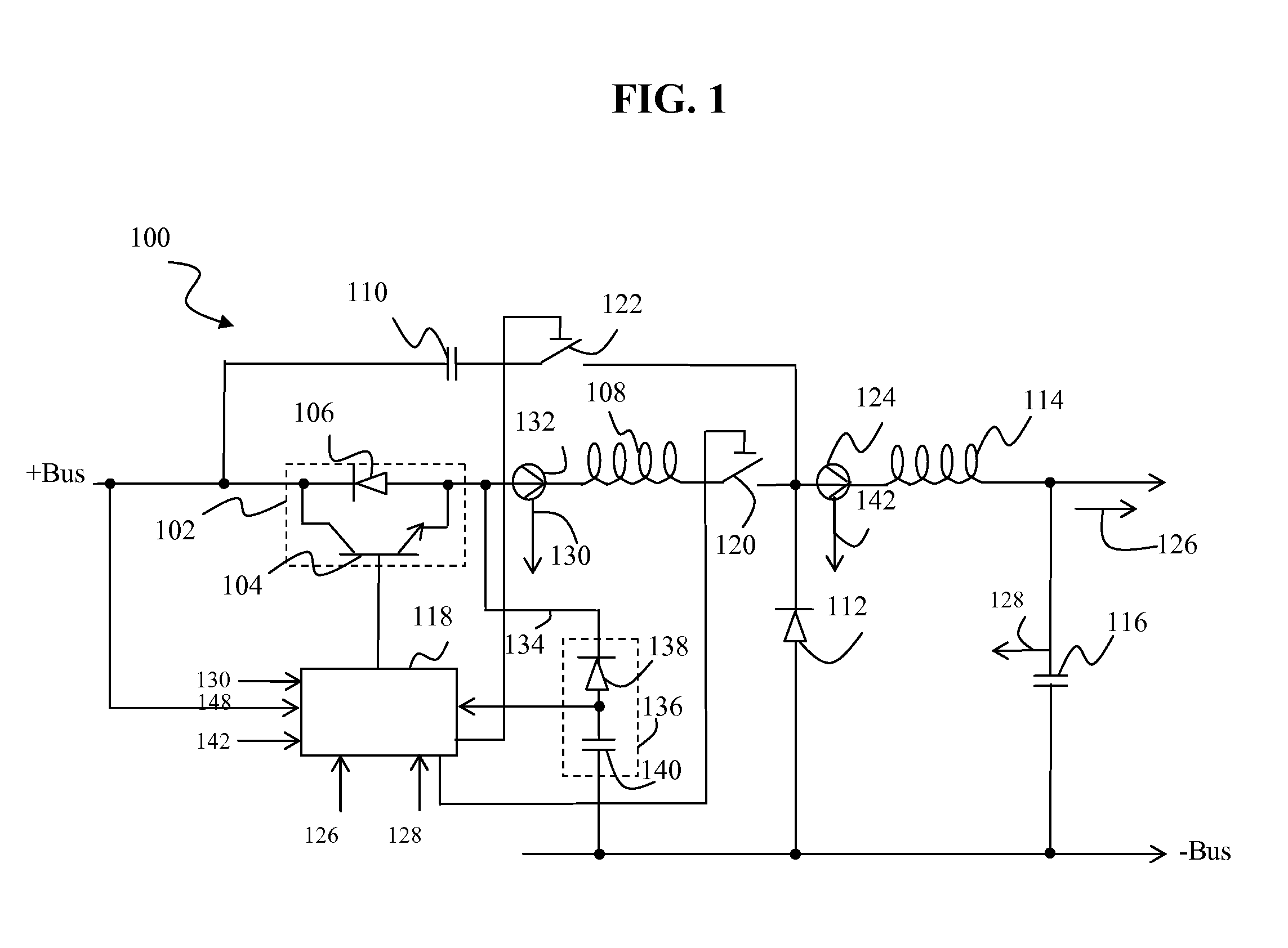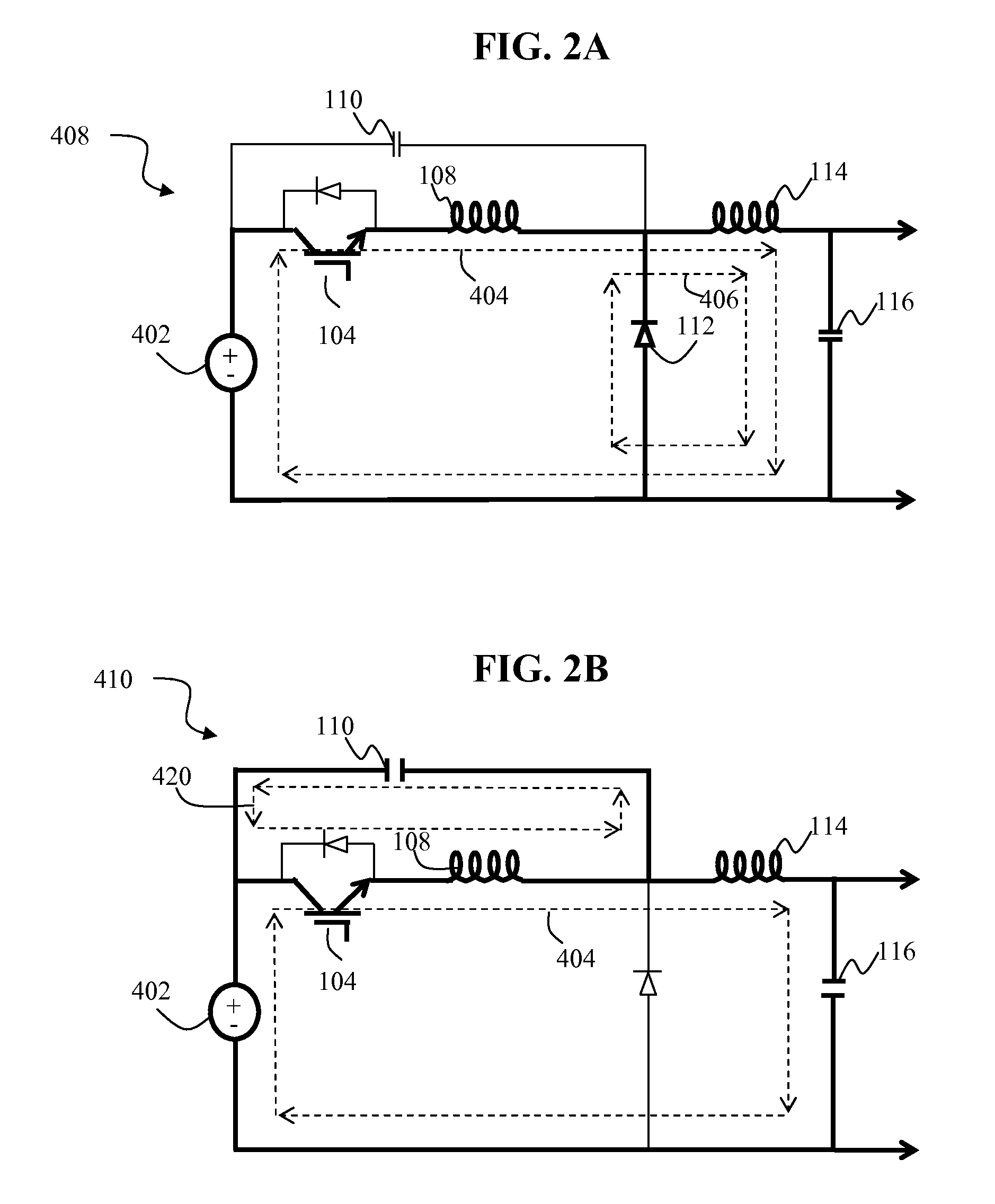Adjustable resonant buck converter
a buck converter and buck converter technology, applied in the direction of electric variable regulation, process and machine control, instruments, etc., can solve the problems of large space constraints, high power loss of silicon-controlled full-bridge rectifiers, and high current ripples, and achieve low power loss, low ripple current, and compactness.
- Summary
- Abstract
- Description
- Claims
- Application Information
AI Technical Summary
Benefits of technology
Problems solved by technology
Method used
Image
Examples
Embodiment Construction
[0014]FIG. 1 illustrates a circuit diagram of an adjustable resonant buck converter circuit 100 according to some embodiments. The converter 100 includes a switching element 102 in series with a positive terminal of a DC power supply (not shown), a resonant inductor 108, an inductor switch 120, and an output inductor 114. The converter 100 also includes a branch having a capacitor 110 in series with a capacitor switch 122. The branch is parallel to the switching element 102, the resonant inductor 108, and the inductor switch 120. The switching element 102 includes a transistor 104 in parallel with a diode 106. The transistor 104 can include, for example, a bipolar junction transistor (BJT) or a field-effect transistor (FET). The diode 106 can be anti-parallel in polarity with the transistor 104. As shown in FIG. 1, the resonant inductor 108 and inductor switch 120 are positioned to the right of the switching element102 (i.e., on the anode-side of the diode 106). However, the resonan...
PUM
 Login to View More
Login to View More Abstract
Description
Claims
Application Information
 Login to View More
Login to View More - R&D
- Intellectual Property
- Life Sciences
- Materials
- Tech Scout
- Unparalleled Data Quality
- Higher Quality Content
- 60% Fewer Hallucinations
Browse by: Latest US Patents, China's latest patents, Technical Efficacy Thesaurus, Application Domain, Technology Topic, Popular Technical Reports.
© 2025 PatSnap. All rights reserved.Legal|Privacy policy|Modern Slavery Act Transparency Statement|Sitemap|About US| Contact US: help@patsnap.com



